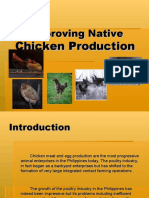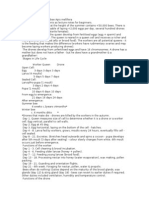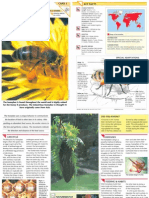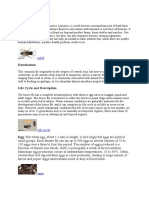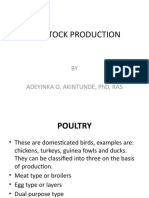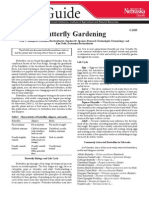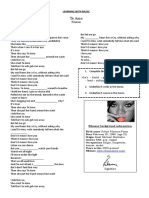Megacrania Phelaus - English (Solomons)
Megacrania Phelaus - English (Solomons)
Uploaded by
gopalaCopyright:
Available Formats
Megacrania Phelaus - English (Solomons)
Megacrania Phelaus - English (Solomons)
Uploaded by
gopalaCopyright
Available Formats
Share this document
Did you find this document useful?
Is this content inappropriate?
Copyright:
Available Formats
Megacrania Phelaus - English (Solomons)
Megacrania Phelaus - English (Solomons)
Uploaded by
gopalaCopyright:
Available Formats
Megacrania phelaus
order: Phasmatodea
suborder: Anareolatae
family: Phasmatidae
subfamily: Platycraninae
tribe: Platycranini
genus: Megacrania (Kaup, 1871)
species: Megacrania phelaus (Westwood, 1859)
general notes:
• a very beautiful, yet difficult species to be bred – recommended only for the experienced breeder
origin:
• my stock origins from the mountains in Central Kwara'ae Province, Malaita (Solomon Islands). I received eggs
directly from Malaita in 2006
• species ID by Oskar Conle
food plants:
• the natural food plant of this species is Pandanus. For the first generation I bought fresh Pandanus leaves in an
asian grocery shop. This plant (namely Pandanus amaryllifolius ( = P. odorus)) is being used in many asian kitchen
as a spice plant. In Thailand this plant is called "Bay toey". The problem is that Pandanus from shops can be
poisoned with pesticides. Still I could breed the first generation on such Pandanus – but when they were adult for
some weeks, I got poisoned Pandanus – and all M. phelaus dopped dead over night. Luckily I had some eggs
already.
• for the second generation I got Pandanus from the Zoo in Zurich. You may also get Pandanus from a botanical
garden which might be near your home
• another possibility is that you will buy your own Pandanus plants from a market-garden or a plant shop. But you have
to be careful with plants from such places. Usually ALL plants from such shops are treated with pestizids and / or
insectizids. It takes a few weeks or even months until these poisons are nutralized, if they will become inactive at all.
Allow 3 months to go by before you feed them to your insects.
Further you need to know that Pandanus is quite a slow growing plant. And these insects can eat quite a lot and
sometimes they do not eat in a very economic way – to say the least
• I found alternative food plants on which they are feeding – namely Mahonia aquifolium, reed and palm leaves
(Chrysalidocarpus lutescens).
So far there is only experience on Mahonia aquifolium as a food plant. M. aquifolium is a quite frequent garden plant
and it is winter green. M. phelaus nymphs will start to feed on this plant readily. But it seems to be difficult to bring the
nymphs up successfully. Mainly the nymphs will die during moulting (ecdysis), although the humidity might obviously
be high. At the moment I know only of one skilled breeder who has been able to get adult M. phelaus by feeding
them on M. aquifolium. She informed me that she kept the humidity in their cage very high, and also she sprayed
them with water 1-2 times a day. So for the time being it is not yet clear whether M. aquifolium could be an alternative
food plant at all.
Still there is no experience with reed or palm leaves as alternative food plants for M. phelaus (or other Megacrania
species). Nymphs will feed on these plants. But as I do not have a good supply of these plants the whole year round,
therefore I can not make experiments with that. Someone who has these plants all the year round will have to do
that.
females: pic1 pic2 pic3 pic4
• females are about 11 cm long, They do also have well developed wings. But as they become quite heavy when
ready to lay eggs, thus they can not fly at all
• females are from a very dark brown to light brown with greenish or greenish-blue legs, orange-brown wings and
orange antennae and eyes
males: pic1 pic2 pic3 pic4 pic5
• males about 8 cm and have well developed wings too. They use their wings occasionally for a flight which is more of
a gliding than real flying
• males being much more brilliant in colour. They have greenish-blue legs, a shining black body and reddish wings,
antennae and eyes
• pics of couples: pic1 pic2 pic3 pic4 pic5
eggs: pic1
• large eggs – 10 mm long, 4 mm high, 3 mm wide
• colour is a dark greyish-brown
breeding notes:
• nymphs hatch after about 5-6 months. The eggs were incubated on a damp (but not soaking wet !) paper tissue or
damp sand. Springtails were used to control fungus (mould). Incubation temperatures were 18 – 25 °C
• pics of nymphs: pic1 (freshly hatched) pic2 (second instar - L2) pic3 (older nymphs)
• important: nymphs are prone to drown in the container for the food plant ! Therefore cover the container for the food
plant, for example with cotton wool. Adults are no more prone to drown
• once you have a steady source for Pandanus for them, they will grow up without further problems
• I am breeding them in an airy cage. On the bottom of the cage there is paper tissue which is being kept constantly
wet
• They like to drink, so their cage is being sprayed regularely.
• they are being bred at room temperatures (18 – 25 °C)
• they reached adulthood after about 3,5 (males) to 4,5 months (females). As usual, males (having one moult less)
mature earlier than the females
• males will stay on their females back and do not leave her again - unless there are more "free" females around. He
will even stay on her back while eating. Thus he sometimes has to bend his abdomen in a narrow angle. Bachelor
males will try to seize a female which is already occupied by another male. The beset male will strongly defend
himself against this attack by excitedly struggling and tapping with his fore and midlegs and his jaws wide open. I
have even seen them trying to bite the intruder in the legs and sometimes they do wrestle with each other. Therefore
it is also advisable not to put more males than females in the same cage. But otherwise they are peaceful creatures
• 3 weeks after their final moult, females start to lay eggs - about 8 – 10 a week. They just drop them to the ground
• It seems to be an easy species for breeding - if you have access to Pandanus..........
On my blog (here) you can also find a downloadable text with more general infos about my breeding conditions, which might
be helpful (see „infos and care sheets“)
Please do not hesitat to contact me if you have any further questions - I will try my best to help
And I would be happy to hear from you about your experiences
Bruno Kneubühler (Switzerland)
gopala@bluewin.ch
phasmid@bluewin.ch
http://www.phasmatodea.blogspot.com
You might also like
- Psilocybin Psilocybe Cubensis StrainsDocument23 pagesPsilocybin Psilocybe Cubensis StrainsIxulescu Haralambie95% (19)
- Pitch Marking ChartDocument1 pagePitch Marking ChartSanskriti BhattNo ratings yet
- Breeding MealwormsDocument2 pagesBreeding MealwormsAlamaram Matirimony0% (1)
- Bio 110 Lab Manual Spring 2011Document97 pagesBio 110 Lab Manual Spring 2011Thom_mccaffNo ratings yet
- Medical Parasitology in Tables PDFDocument15 pagesMedical Parasitology in Tables PDFRami Mohammed88% (8)
- Care Sheet - Goliath Bird Eating SpiderDocument4 pagesCare Sheet - Goliath Bird Eating SpiderJohn GamesbyNo ratings yet
- A Beginner's Guide to Canaries - Including Chapters on Food, Rearing and Care for CanariesFrom EverandA Beginner's Guide to Canaries - Including Chapters on Food, Rearing and Care for CanariesNo ratings yet
- Carolina Biological Bean Beetles Data SheetDocument2 pagesCarolina Biological Bean Beetles Data Sheetsannihalimat2No ratings yet
- SuperwormsDocument2 pagesSuperwormsYanoNo ratings yet
- Culturing MealwormsDocument2 pagesCulturing MealwormsKamalNo ratings yet
- Care Guide: Goliath Stick Insect, Eurycnema GoliathDocument2 pagesCare Guide: Goliath Stick Insect, Eurycnema GoliathDionisius D. SutantoNo ratings yet
- Raising MealwormsDocument12 pagesRaising MealwormsIonLeveanuNo ratings yet
- Poultry RaisingDocument41 pagesPoultry RaisingCharie C. Orboc100% (1)
- Laboratory or Rabbit or Pet Animal Productions PDFDocument19 pagesLaboratory or Rabbit or Pet Animal Productions PDFPublic InterestNo ratings yet
- 35 Prexa-1Document17 pages35 Prexa-1shortswallahedxNo ratings yet
- Buy The Complete Version of This Book At: The Practical Canary HandbookDocument5 pagesBuy The Complete Version of This Book At: The Practical Canary Handbookdivya kumarNo ratings yet
- 8. Cucurbitaceous and Malvaceous CropDocument32 pages8. Cucurbitaceous and Malvaceous Cropjatinmishra451No ratings yet
- The Husbandry of Western Hognose Snakes-InstructionsDocument7 pagesThe Husbandry of Western Hognose Snakes-Instructionskechara19No ratings yet
- 13. Citrus, Banana, Pomegranate, Litchi and GuavaDocument42 pages13. Citrus, Banana, Pomegranate, Litchi and Guavajatinmishra451No ratings yet
- Epa Livestocks: Posted by inDocument5 pagesEpa Livestocks: Posted by inhampshireiiiNo ratings yet
- Life Cycle of The Honeybee Apis MelliferaDocument3 pagesLife Cycle of The Honeybee Apis MelliferaBawbagzNo ratings yet
- Care Sheet - Corn SnakeDocument2 pagesCare Sheet - Corn SnakeJohn GamesbyNo ratings yet
- Unit 1 - Poultry Production - StudentsDocument57 pagesUnit 1 - Poultry Production - Studentsaicel saga100% (1)
- PestDocument12 pagesPestanjwalsrishtiNo ratings yet
- Insect Pest of BananaDocument6 pagesInsect Pest of BananaAryan RajNo ratings yet
- Mousereproduction412 23 11pptDocument58 pagesMousereproduction412 23 11pptMohamed NoorNo ratings yet
- Mcleary's Spectre Husbandry Data SheetDocument2 pagesMcleary's Spectre Husbandry Data SheetAlmaNo ratings yet
- Tiger Barbs PDFDocument14 pagesTiger Barbs PDFamitdesai1508No ratings yet
- Wildlife Fact File - Insects & Spiders - Pgs. 1-10Document20 pagesWildlife Fact File - Insects & Spiders - Pgs. 1-10ClearMind84100% (2)
- Paper of Miscellaneous LivestockDocument7 pagesPaper of Miscellaneous LivestockAnonymous VgjdEMbJjyNo ratings yet
- Cannibalism Prevention and Treatment - VirginiaAg 2902-1095 (2009)Document3 pagesCannibalism Prevention and Treatment - VirginiaAg 2902-1095 (2009)fodoNo ratings yet
- Raising Rabbits 2Document60 pagesRaising Rabbits 2Mohammed HammadNo ratings yet
- Zebra FinchDocument6 pagesZebra Finchrstrman100% (1)
- 3 Snail FarmingDocument6 pages3 Snail FarmingΓιάννης ΓιαννάκηςNo ratings yet
- BR06+Cockatiel+ +Fact+SheetDocument2 pagesBR06+Cockatiel+ +Fact+SheetOmronzed87No ratings yet
- Zebra Finch: Necessities: ExtrasDocument2 pagesZebra Finch: Necessities: ExtrasColin DowlingNo ratings yet
- 461 - Rabbit Production-2Document27 pages461 - Rabbit Production-2Softelgin Elijah MulizwaNo ratings yet
- Insect Pest of CoconutDocument6 pagesInsect Pest of CoconutAryan RajNo ratings yet
- Life Cycle of House Fly and Silk MothDocument7 pagesLife Cycle of House Fly and Silk Mothoutvie111No ratings yet
- CombinedDocument29 pagesCombinedkevin.fjj.caNo ratings yet
- Infusoria and Paramecium CulturesDocument20 pagesInfusoria and Paramecium Culturesmonjitpaul143No ratings yet
- Types of Reproduction: Asexual and Sexual ReproductionDocument36 pagesTypes of Reproduction: Asexual and Sexual ReproductionMarievic DavidNo ratings yet
- Handrearing GuideDocument8 pagesHandrearing GuideJohn Carlo LayugNo ratings yet
- New Zealand Breed RabbitsDocument15 pagesNew Zealand Breed RabbitsScribdTranslationsNo ratings yet
- Bee SpeciesDocument26 pagesBee Speciesmohanrajagri2023No ratings yet
- Handle with Care: An Unusual Butterfly JourneyFrom EverandHandle with Care: An Unusual Butterfly JourneyRating: 4.5 out of 5 stars4.5/5 (17)
- How Living Things ReproduceDocument18 pagesHow Living Things ReproduceJohn Iderf LagardeNo ratings yet
- PDF Catter PillarDocument36 pagesPDF Catter PillarKhadija RvNo ratings yet
- The Hand-Rearing of Common Swifts (Apus Apus) : Where To Keep A Young SwiftDocument14 pagesThe Hand-Rearing of Common Swifts (Apus Apus) : Where To Keep A Young SwiftDEV .MNo ratings yet
- Biology Summer School Animal Behaviour Thursday 1 July 2010Document1 pageBiology Summer School Animal Behaviour Thursday 1 July 2010ZicoNo ratings yet
- Intestinal FlukesDocument24 pagesIntestinal Flukesroy mata88% (8)
- Exp 2Document4 pagesExp 2idil.bt03No ratings yet
- Livestock Production: BY Adeyinka O. Akintunde, PHD, RasDocument34 pagesLivestock Production: BY Adeyinka O. Akintunde, PHD, RasNonny ElewekeNo ratings yet
- Savannah MonitorDocument4 pagesSavannah Monitorx88sqsgjx2No ratings yet
- Trichuris TrichiuraDocument22 pagesTrichuris Trichiura2253010837No ratings yet
- Spotted SalamandersDocument2 pagesSpotted SalamandersPatty NeilsonNo ratings yet
- Nebraska Butterfly Gardening - University of NebraskaDocument4 pagesNebraska Butterfly Gardening - University of NebraskaFree Rain Garden Manuals100% (1)
- IPM Programme - PCIDocument61 pagesIPM Programme - PCIBhuwan SNo ratings yet
- Carolina Biological Mealworms-Care SheetDocument1 pageCarolina Biological Mealworms-Care SheetAmber Martin [Lowman ES]No ratings yet
- All State Etudes Set 2 1Document13 pagesAll State Etudes Set 2 1Rafael LimaNo ratings yet
- HTM130 Assignment Report Jonker WalkDocument3 pagesHTM130 Assignment Report Jonker WalkNura'isyah Balqis100% (1)
- Rihanna Te AmoDocument1 pageRihanna Te AmojofontNo ratings yet
- Master BBQ Sauce Recipe (Sweet Heat) Kevin Is CookingDocument10 pagesMaster BBQ Sauce Recipe (Sweet Heat) Kevin Is CookingBarba BranimirNo ratings yet
- The 22 Rules of StorytellingDocument2 pagesThe 22 Rules of StorytellingJulia PatiñoNo ratings yet
- DX DiagDocument12 pagesDX DiagWouter FlipNo ratings yet
- Simon A. Cadenza For Michael Haydns Concertino Full Score OH 0004 X7up1kDocument4 pagesSimon A. Cadenza For Michael Haydns Concertino Full Score OH 0004 X7up1kanderson.rodriguesNo ratings yet
- RUN THIS ONE - Simon Forester - The Sunken TowerDocument1 pageRUN THIS ONE - Simon Forester - The Sunken TowerKevin PerrineNo ratings yet
- REVISION MultipleDocument4 pagesREVISION MultiplehyenbydoyNo ratings yet
- Fun Anxious Tik Tok Video Compilation Remix Songs Comedy EntertainmentDocument9 pagesFun Anxious Tik Tok Video Compilation Remix Songs Comedy EntertainmentfunanxiousNo ratings yet
- Mercy Brown Vampire IncidentDocument3 pagesMercy Brown Vampire IncidentValentin MateiNo ratings yet
- Entrepreneurship Project On OreoDocument23 pagesEntrepreneurship Project On OreoANUSHKA DASGUPTA100% (1)
- Ar611-Lte4ea Data SheetDocument15 pagesAr611-Lte4ea Data SheetCaleb KebiraNo ratings yet
- Ingliz Tili 7 Sinf TestDocument6 pagesIngliz Tili 7 Sinf Testorazbaevanaubahar30No ratings yet
- How To Throw Boomerangs!Document10 pagesHow To Throw Boomerangs!zelNo ratings yet
- Test For P6Document16 pagesTest For P6AirNo ratings yet
- Fungal Warrior - The Homebrewery-MinDocument4 pagesFungal Warrior - The Homebrewery-MindanNo ratings yet
- Revision K8Document15 pagesRevision K8Nguyễn MiyoNo ratings yet
- VOMS 102D 8pDocument8 pagesVOMS 102D 8pdavood salkhordehNo ratings yet
- Suzuki Access ReviewDocument4 pagesSuzuki Access ReviewSunel PendemuNo ratings yet
- Las Mapeh 9 q4 w4 PeDocument8 pagesLas Mapeh 9 q4 w4 PeJemalyn Hibaya LasacaNo ratings yet
- BMW Coding Parameters - F15 - For X5 and X6 Series V2Document19 pagesBMW Coding Parameters - F15 - For X5 and X6 Series V2s.melihturhanNo ratings yet
- TLE7-CSS Mod2 Part1 Performing-Computer-Operation V4Document38 pagesTLE7-CSS Mod2 Part1 Performing-Computer-Operation V4AmorCabilinAltubarNo ratings yet
- Prezentare Charles DickensDocument8 pagesPrezentare Charles DickensFlori Maria0% (1)
- Retah 22Document7 pagesRetah 22Zenatabor LakewNo ratings yet
- Tarun Bansal ResumeDocument2 pagesTarun Bansal Resumesunil jainNo ratings yet
- Isc Chapter 4Document83 pagesIsc Chapter 4Cristina Joy CruzNo ratings yet
- Irish Dance Tunes For Flatpicking Guitar Lessons 1-3Document32 pagesIrish Dance Tunes For Flatpicking Guitar Lessons 1-3Εγχορδος Ανταρτης100% (1)
- No.149-Malur Assembly Constituency PWD VotersDocument150 pagesNo.149-Malur Assembly Constituency PWD VotersDhanush B SNo ratings yet












